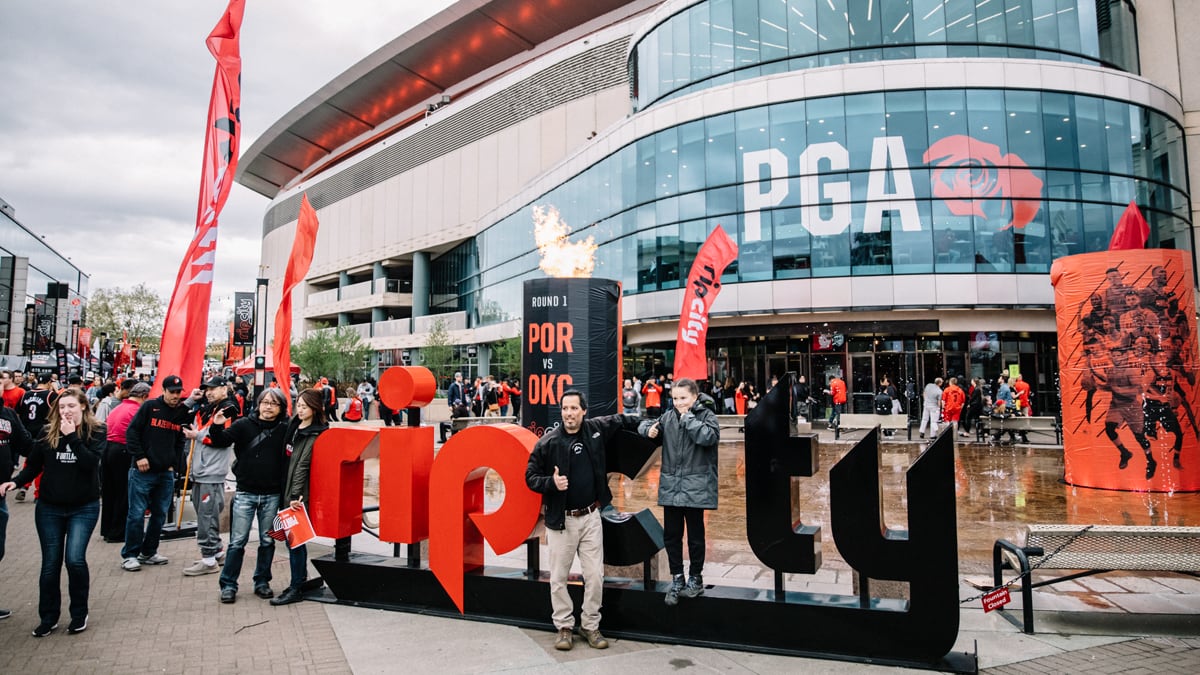There’s been a lot of Blazer news lately: better-than-normal offseason deals, headed by the acquisitions of Jerami Grant and Gary Payton II. A promising draft pick in Shaedon Sharpe (oops, injured already). The contract extension of franchise cornerstone Damian Lillard, making him the highest-paid man in basketball. And, of course, there’s the game of cat and mouse between Blazers chairwoman Jody Allen, who swore last week the team isn’t for sale, and Nike co-founder Phil Knight, whose reported $2 billion bid suggests that it is.
Two indisputable facts: The Blazers’ ground lease with the city of Portland expires in 2025; and its home gym, Moda Center, completed in 1995, is one of the oldest arenas in the NBA. Those two data points raise questions about the arena’s fate, especially since there are rumblings that, should Knight acquire the team, he envisions a serious upgrade of the Rose Quarter.
Blazer fans and elected officials, including Portland Mayor Ted Wheeler and U.S. Sen. Ron Wyden (D-Ore.), have made it clear they want to do whatever it takes to keep the Blazers here.
But a review of property tax records shows the franchise is already getting something of a sweet deal from a property tax assessment that values Moda Center at far below its construction cost and even further below its replacement cost.
Here are three key numbers:
$262 million
That’s what Moda Center cost to build when then-owner Paul Allen completed construction in 1995. The city of Portland contributed $34.5 million, while lenders and Allen ponied up the balance.
$600 million
That’s a conservative estimate, based on the NBA’s newest arenas, of what it would cost to construct a new home for the Blazers.
In 2016, the Sacramento Kings built a new arena for $557 million. The city of Sacramento chipped in $255 million of that amount. In 2018, the Milwaukee Bucks opened Fiserv Forum at a cost $524 million, $250 million of which was public money. The Golden State Warriors completed Chase Center in 2019 for $1.4 billion. The Warriors’ owners financed the facility privately.
That’s a departure from most arena projects, which rely on public subsidy. A 2018 University of West Virginia study found that 129 professional sports arenas built over the past 50 years in North America got an average subsidy of 65%.
$82 million
That’s the current assessed value of the 11 tax lots that constitute the Blazers’ holdings at 1 Center Court. The franchise’s property tax bill last year? $1.52 million. That’s a lot—but a pittance compared to what the taxes would be if the property were valued at cost or replacement value.
Oregon tax authorities instruct assessors that there are three ways to value real property: cost of construction, the income a property generates, or based on comparable sales. But arriving at an assessed value is more art than science. The Blazers sued in tax court in 2005, seeking to lower the value of their real estate. The case dragged on through 2009, and although the case file is sealed, the verdict slashed the assessed value by more than 50%, from $139 million in 2008 to $66 million.
Multnomah County assessor Mike Vaughn says NBA arenas across the country are often valued far below construction or replacement cost because they are usually wrapped up in complex agreements with teams and other assets; because arenas rarely change hands; and because NBA franchises are controlled by highly sophisticated owners whose attorneys and accountants are hard to beat. (The Blazers did not respond to a request for comment.)
Vaughn says assessors and owners regularly disagree on the value of arenas—and the owners usually win, often by arguing that revenues directly attributable to arenas, such as tickets, concessions, parking, etc., do not justify the value of construction. (Television broadcast money and appreciation in the value of franchises, which are two of the real moneymakers for owners, are beyond the reach of property tax assessors.)
Vaughn’s office was able to bump up Moda Center’s assessed value slightly after a 2015 review. But Jody Wiser of the watchdog group Tax Fairness Oregon notes that owners of homes the same age as Moda Center typically pay taxes on an assessed value at least as big as the cost of construction. That’s proportionally much more than the Blazers are paying.
In other words, the Blazers are getting a hometown discount—and Knight or whoever builds the team’s next arena will likely seek equally favorable terms. Wiser acknowledges comparing an NBA arena to a home is not apples to apples, but still, she says, “It doesn’t seem fair.”
